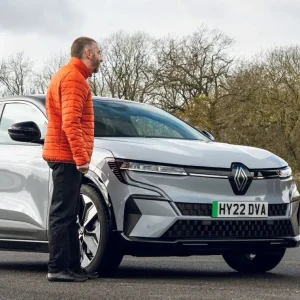Edinburgh, location of the very first commercial city car club which I launched at the end of the nineties, is once more at the forefront of driving initiatives. This time it is set to introduce a blanket 20mph speed limit covering some 25 miles of the city’s roads.
In my vision of fleet management in 2015, I predicted that: “We anticipate that by 2015 the national speed limit may well have been lowered to 60mph and limits in residential areas and inner cities reduced to 20mph to not only lower road deaths and serious injuries still further but also to reduce overall carbon footprints. Inevitably, along with increased congestion, travelling times on the road will lengthen in the future.”
Now it seems that Edinburgh is about to become the first city to take the lead on urban speed limits by launching a £100,000 pilot scheme to cut drivers’ speed in an area between Arthur’s Seat and Blackford Hill. In a concession to its major arterial road network, 12 miles of major roads will however retain their existing 30mph limits.
City councillors will extend the 20mph limit to other areas of the city if this new pilot scheme proves a success.
In a separate move, the council is targeting ‘gas guzzlers’ by doubling their car park permits seen by most as just another measure to boost depleted coffers rather than influencing car ownership.
Meanwhile, Nottingham has been recognised as the least car-dependent city in England, followed by London and Brighton and Hove. Nottingham has an efficient tram system and its council is the first to introduce a Working Place Levy,, which comes into force on 11 October.
It is known that other councils are giving serious consideration to introducing WPLs as a means of looking green while generating much needed revenue to offset some of their major budget cuts. As HMRC is taking a much tougher stance on tax collection, so councils will look at all revenue opportunities to generate income.
While WPLs will prove unpopular among employers, and even more so among employees if the charges are passed down, it would be no surprise to see greater acceptance for lower speed limits among drivers as they see a consequent lower weekly fuel bill. This is especially so given the news that the recent fuel price hikes have negated the average 13% efficiency gains achieved by vehicle manufacturers since 2004.
With more vehicles on our roads, higher fuel costs, greater environmental awareness and a ‘safety culture’ pervading our society, lower speed limits are inevitable.
Successful voluntary adherence to lower speed limits is also more likely if other speed limits are reduced in kind so that the contrast between all speed limits remains relatively the same. It’s obvious that if someone has to slow down to 20mph for a village, they are more likely to comply with that speed limit if they are limited to 50mph in the surrounding rural roads, the 30mph differential remaining the same.
Certainly, the lowering of the nation’s speed limits will be in stark contrast to the ever-increasing faster-paced lifestyle of its working citizens. We certainly live in interesting times and the world as we know it today will definitely be different in the future.
Follow BusinessCar on TWITTER





